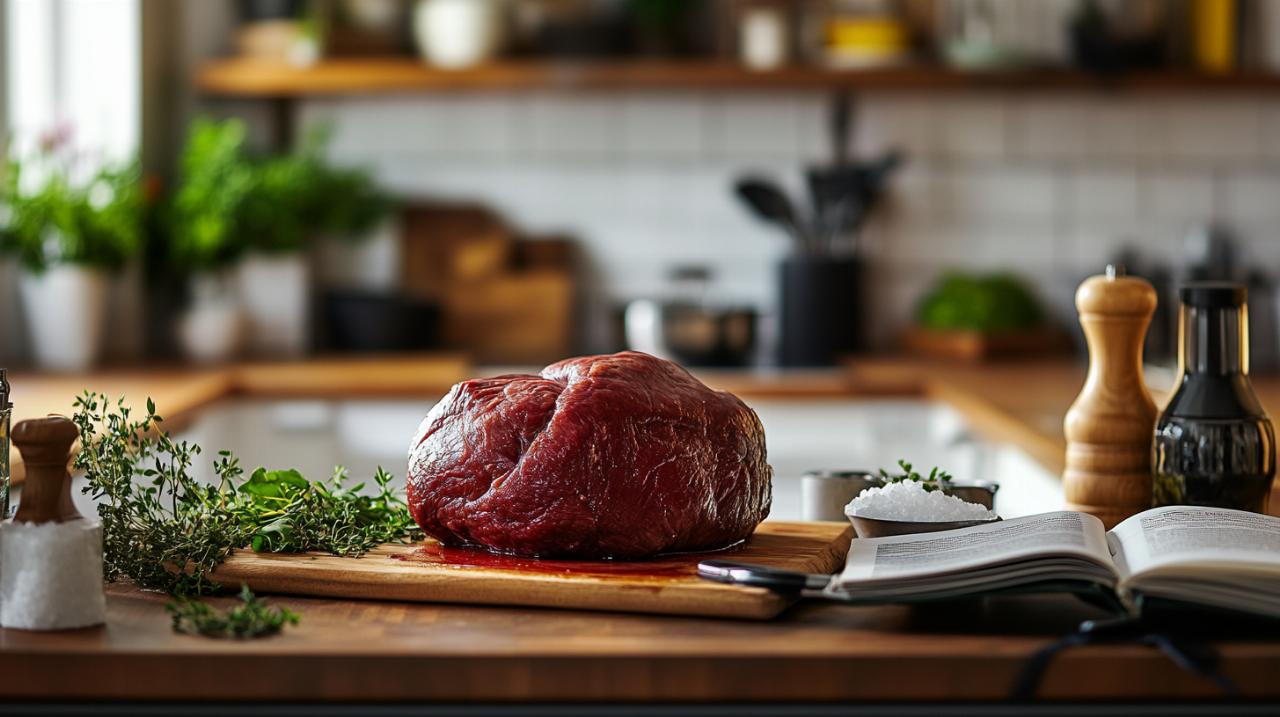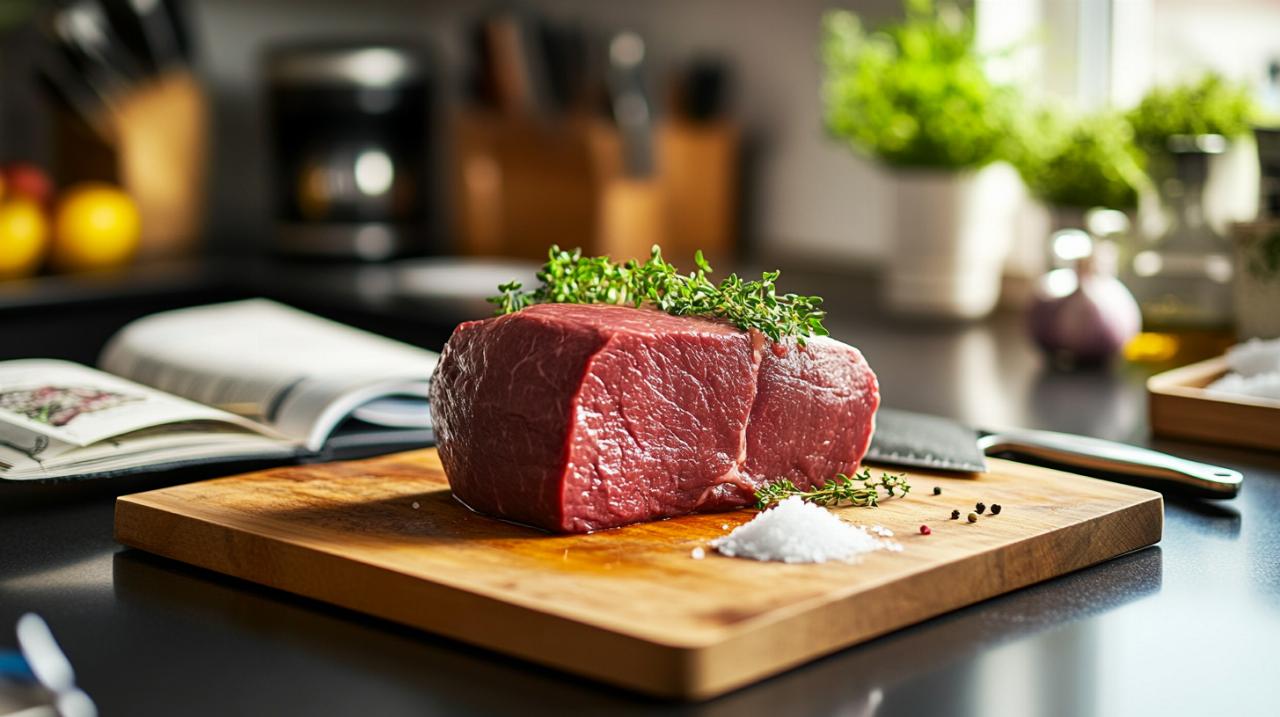The Ultimate Guide: How to Clean a Beef Tongue and Where to Source Quality Ox Tongue in the UK
Preparing beef tongue might seem like an intimidating culinary challenge at first glance, but with the right approach and a bit of patience, this underappreciated cut can be transformed into something genuinely remarkable. Once a staple across British households, ox tongue has quietly slipped from the modern table, yet those who rediscover it often find themselves captivated by its unique texture and surprisingly delicate flavour. This guide will take you through every step needed to clean, cook, and present beef tongue with confidence, whilst also pointing you towards reputable sources across the United Kingdom where quality offal can be purchased.
Preparing your beef tongue: from thawing to initial cleaning
Proper Thawing and Soaking Techniques for Optimal Results
Before you even think about applying heat, the journey begins with proper preparation. If you have purchased a frozen beef tongue, allow it to thaw gradually in the refrigerator rather than rushing the process at room temperature. This gentle thawing preserves the integrity of the meat and ensures even cooking later on. Once fully thawed, immerse the tongue in a basin of cold water for several hours or even overnight. This soaking stage is essential as it draws out impurities and any residual blood, leaving you with a cleaner canvas to work with. The water should be changed at least once during this period to maintain freshness.
Essential pre-cooking preparation steps
After the initial soak, give the tongue a thorough rinse under cold running water. You may notice a slightly rough or uneven surface, which is perfectly normal. At this stage, some cooks prefer to lightly scrub the exterior with a brush to remove any remaining debris. This preliminary cleaning sets the stage for the boiling process that follows. The key is to approach each step methodically, ensuring that the tongue is as clean as possible before it meets the pot. This attention to detail will pay dividends in both flavour and presentation once the cooking is complete.
Cooking and Peeling: Mastering the Art of Tender Beef Tongue
The perfect simmering method with aromatic vegetables
Now comes the transformation. Place the cleaned tongue into a generously sized pot and cover it completely with cold water, ensuring there is ample room for the liquid to circulate. To this, add a selection of aromatic vegetables such as carrots, celery, and onions, along with a few bay leaves, cloves of garlic, and perhaps a knob of fresh ginger. A teaspoon or two of salt, alongside a handful of fresh herbs or bouillon cubes, will infuse the broth with depth and character. Bring the pot to a rolling boil over high heat, then immediately reduce to a gentle simmer. This slow, steady cooking is crucial. Depending on the size of your tongue, expect to simmer for anywhere between three and four hours. The goal is to achieve a tenderness that allows a knife to glide through the meat with minimal resistance. During this time, the aromatics will permeate the tongue, adding layers of flavour that complement its naturally rich profile.
Peeling Away the Skin: Timing and Technique
Once your beef tongue has reached the desired tenderness, carefully transfer it from the pot into a bowl filled with cold water. This sudden change in temperature halts the cooking process and makes handling the meat far more manageable. While the tongue is still warm but not scalding, you can begin the peeling process. Using a small, sharp knife, gently lift an edge of the outer white skin and peel it away. If the tongue has been cooked properly, this layer should come off with relative ease, revealing the smooth, pale meat beneath. Any stubborn patches can be encouraged with a gentle scrape of the knife. This stage requires a delicate touch, but the result is a beautifully clean piece of meat ready for slicing or further preparation. The peeled tongue can be used immediately or allowed to cool completely before being stored in the refrigerator for up to three days, or in the freezer for up to a month.
Delicious ways to serve your perfectly prepared beef tongue
Classic british presentations: from madeira sauce to rustic casseroles
 With your beef tongue expertly prepared, the possibilities for serving are wonderfully varied. For a classic approach, slice the cooled tongue thinly and arrange it on a platter, accompanied by a rich Madeira sauce that highlights the meat's subtle, almost sweet undertones. This elegant presentation works beautifully for a Sunday roast or a special dinner party. Alternatively, dice the tongue into generous cubes and fold it into a hearty casserole alongside potatoes, turnips, and other root vegetables. The gelatinous quality of the tongue adds body to the sauce, creating a dish that is both comforting and deeply satisfying. These traditional British preparations celebrate the ingredient's versatility and pay homage to its place in culinary history.
With your beef tongue expertly prepared, the possibilities for serving are wonderfully varied. For a classic approach, slice the cooled tongue thinly and arrange it on a platter, accompanied by a rich Madeira sauce that highlights the meat's subtle, almost sweet undertones. This elegant presentation works beautifully for a Sunday roast or a special dinner party. Alternatively, dice the tongue into generous cubes and fold it into a hearty casserole alongside potatoes, turnips, and other root vegetables. The gelatinous quality of the tongue adds body to the sauce, creating a dish that is both comforting and deeply satisfying. These traditional British preparations celebrate the ingredient's versatility and pay homage to its place in culinary history.
Creative Serving Suggestions with Vinaigrettes and Roasted Accompaniments
For those seeking something a little more contemporary, consider serving thin slices of beef tongue with a sharp vinaigrette, pickled gherkins, and a scattering of fresh herbs. The acidity cuts through the richness of the meat, creating a balanced and refreshing dish. Another inspired option is to roast the cooked tongue in the oven alongside apples and potatoes, allowing the flavours to meld and caramelise. The natural sweetness of the apples complements the savoury depth of the tongue, resulting in a meal that is both unexpected and utterly delicious. Whether served hot or cold, beef tongue adapts beautifully to a wide range of culinary styles, making it a favourite among adventurous home cooks and professional chefs alike.
Sourcing Quality Ox Tongue and Alternative Options in the UK
Where to Purchase Fresh and Frozen Beef Tongue Across Britain
Finding high-quality beef tongue in the UK has become easier thanks to a resurgence of interest in offal and sustainable eating. Eversfield Organic, for instance, offers a curated selection of organic meat, including offal such as ox tongue, with free delivery on orders exceeding eighty pounds. Their commitment to organic farming and sustainable practices ensures that the meat you receive is both ethically produced and of exceptional quality. The Ethical Butcher, based in Wembley, is another excellent option, providing fresh offal alongside a wide range of other meats. Their contact details are readily available, making it straightforward to place an order or ask for specific cuts. James Whelan Butchers, with several locations across Ireland and a strong online presence, also stocks ox tongue and other offal, often accompanied by helpful cooking advice and recipe suggestions. These butchers prioritise quality and customer service, ensuring that even those new to cooking offal feel supported throughout the process.
Exploring Veal and Mutton Tongue Varieties for Culinary Adventures
While beef tongue is the most commonly available option, it is worth noting that veal and mutton tongues can also be prepared using similar methods, each offering a distinct flavour profile. Veal tongue is generally smaller and more delicate, with a milder taste that some find more approachable. Mutton tongue, on the other hand, carries a richer, more pronounced flavour that appeals to those who enjoy robust, gamey meats. Both varieties can be sourced from specialist butchers and are well worth experimenting with if you wish to expand your offal repertoire. The nutritional benefits of tongue, regardless of the animal, are impressive, with high levels of iron, zinc, vitamin B12, choline, and omega-3 fats making it a valuable addition to a balanced diet. A single one-hundred-gram portion can provide a significant percentage of your daily requirements for these essential nutrients, all while offering a unique and satisfying eating experience.










